Project NePTWNE, which is short for Nano & Polymer Technology for Water and Neural-networks in Erie, is Gannon’s $24 million initiative toward environmental sustainability. This six-phase, ambitious and comprehensive plan addresses water quality, climate change, economic development and the overall quality of life in Erie. It has specific focus on measuring, mitigating and manufacturing solutions to prevent pollutants like microplastics from entering Lake Erie.
Gannon is using its long-standing educational expertise in aquatics, and environmental research and engineering to tackle some of the most pressing environmental challenges facing Lake Erie and its surrounding ecosystems.
Lake Erie is facing concerning environmental impacts.
Lake Erie is the shallowest and warmest of the Great Lakes, making it the most vulnerable to pollution. According to the Environmental Protection Agency, excessive nutrient runoff from agriculture and urban areas, coupled with sewage overflows, are leading to harmful algal blooms in the lake and producing toxins that can harm aquatic life and pose a risk to human health. Microplastics have also been found in high concentrations in Lake Erie. Microplastics, which are small plastic particles less than 5 millimeters in length, are often found in freshwater and marine environments and pose a threat to aquatic life and the health of humans who consume contaminated seafood. EPA reports that 90 percent of waterways that supply drinking water to Americans are at risk of pollution from microplastics. These are a high concern due to their difficulty to remove from the water. Conventional treatment methods, such as filtration and sedimentation, are often ineffective at removing these small particles. In addition to harming marine life and human health, microplastics can lead to broader environmental impacts and contribute to the greenhouse effect as they absorb and retain heat.
Natural resources like water impact our economy.
Not only is Gannon’s Project NePTWNE recognizing and taking action to safeguard the health of Lake Erie as a vital water resource, but it’s also positioned to strengthen the public’s awareness, appreciation and accessibility to resources to increase stewardship among the community and sustain a high quality of life for the Erie region. The Blue Economy concept was developed by the United Nations in 2012, evolving from the previous Green Economy, to be inclusive of sustainable practices that ensure the long-term health of the world’s oceans and seas. This concept has been adapted globally, and right at Gannon’s doorstep in Erie, Pennsylvania, too. The Blue Economy in our region emphasizes Lake Erie as a necessary natural resource to drive ecological and economic growth through an array of industries such as tourism, fishing, commercial and maritime transport, and more. Having a notable population of people living nearby and within the Great Lakes region, Erie is a natural destination for many to enjoy the amenities that our Lake offers. Water preservation efforts like those of Project NePTWNE are the future of sustaining the livelihood of our region and providing the public with a restored relationship and appreciation for Erie’s environment.

1. Removing Microplastics

Project NePTWNE aims to remove one of the biggest pollutants affecting Lake Erie – microplastics. The university has plans for measuring volume of this pollutant to develop new solutions that will remove the pollutant and ultimately prevent them from ever entering the water.
The work toward this is already underway by faculty and students through research and projects such as floating buoy filtration systems run on solar power to remove microplastics from the lake, as well as drones built and deployed to collect air samples above the water to test air quality.
These are just two examples, and it’s only the beginning of what’s to come. Gannon is currently constructing the Center for Manufacturing and Technology within its Institute for Health and Cyber Knowledge, where a high-tech and versatile MakerSpace will be open in September 2023. Using cutting-edge techniques to advance traditional manufacturing using 3D printing, metal fabrication, woodworking, integrated circuit fabrication and more, Gannon will design solutions to address environmental challenges to safeguard the health of the Lake Erie ecosystem and the people who rely on it.
2. Great Lakes Research & Education Center
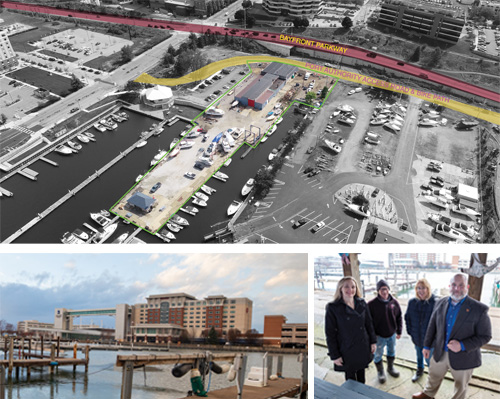
Gannon has agreements in place to lease part of the historic Union Fish Co. building located on the Lake Erie docks to repurpose the space and create the Great Lakes Research & Education Center.
The port location of the lab will enhance research and education on the relationship between water quality and public health, freshwater native fish species and invasive species, the threat from frequent harmful algal blooms and the greater impact that climate change is having on our Great Lakes.It will also serve as an education center for local schools, residents as well as visitors to Erie to highlight the relationship between water quality and public health.
The facility will house features such as fish and turtle tanks, educational spaces for classroom learning, various labs and working spaces for microplastics as well as water testing equipment for researchers to study water quality and its impact on the ecosystem.
3. New Vessel for Research
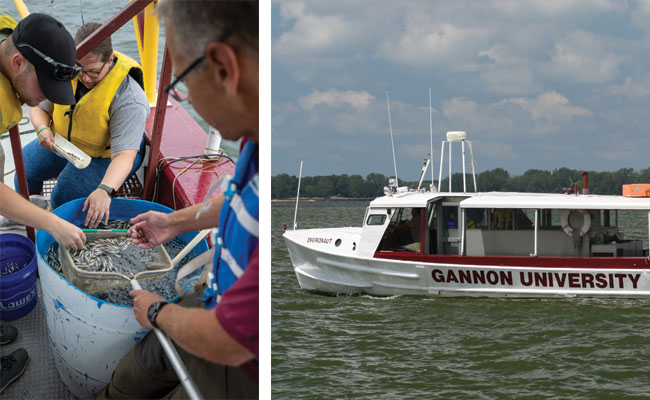
To allow for greater sampling, research and K-16 education on the open waters of Lake Erie, the university is seeking a new research vessel in place of its current vessel, the Environaut.
The Environaut is more than 70 years old and has been a staple of students’ experiential learning in programs like chemistry, freshwater and marine biology, and environmental science and engineering. Students, faculty as well as members of the community have used the vessel to deepen their understanding of Lake Erie’s marine and aquatic life.
Gannon aims to broaden its impact to help researchers better understand the ecosystem and develop more effective strategies to protect it through the addition of a new vessel with passenger capacity of up to 25, as well as features such as a modern sonar or fish finder, a diving platform for launch and retrieval by underwater autonomous vehicles, a ponar dredge for sediment sampling, and various jib cranes and winches for retrieval of research samples.
4. Greenhouse for Community Use
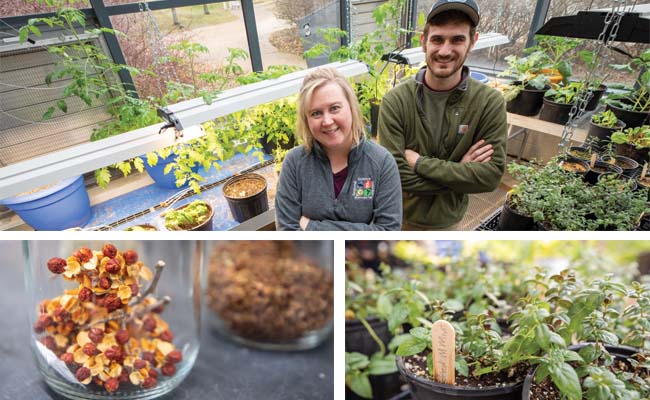
Plans for new greenhouses adjacent to campus in downtown Erie are underway and are expected to be completed in Fall 2023. This effort is in partnership with the Regional Science Consortium. Gannon became the anchor institution for RSC in Fall 2022 to provide collaboration and continuity of education- and research-based knowledge and understanding of the Lake Erie and Ohio River Basin ecosystem to expand sustainability resources and initiatives.
In addition to workforce training and development, student internships and enhancing community programming and education, the greenhouses are another example of how this this partnership is contributing to Erie’s sustainability.
Essential native grasses, plants and vegetables for Presque Isle State Park will be grown inside the greenhouses, and they will also provide a year-round space for residents to grow their own fruits and vegetables. This aims to support local food security and empower the community to be part of the solution, providing jobs to residents to earn a living tending to the plants and grasses.
5. Advanced Labs for Research
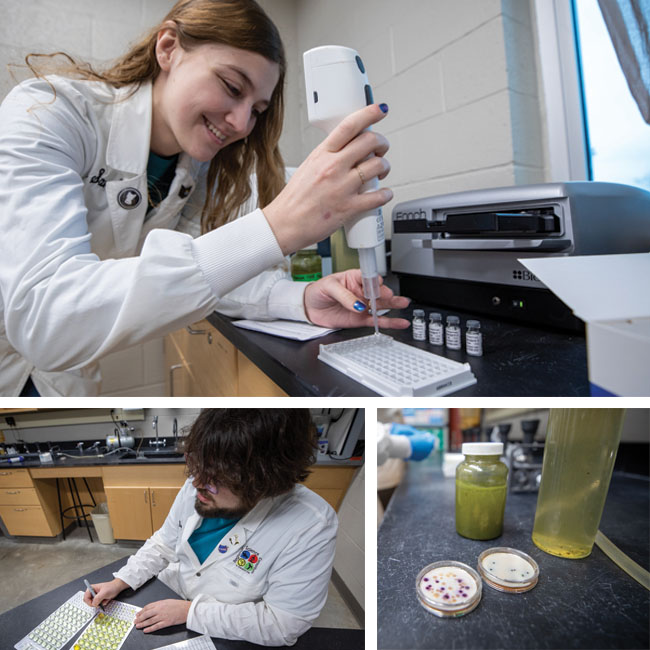
Advanced labs will be created at the Great Lakes Research & Education Center and I-HACK to help identify pollutants, eliminate ecological threats, and develop artificial intelligence to predict weather and tide patterns. This puts Gannon’s Project NePTWNE at the forefront of environmental research and innovation. These spaces will include an Air and Water Quality Lab for pre- and post-sampling of harmful algal blooms, processing shipwreck artifacts using electrolysis, nutrient testing and macroinvertebrates.
6. Public Health and Policy Program
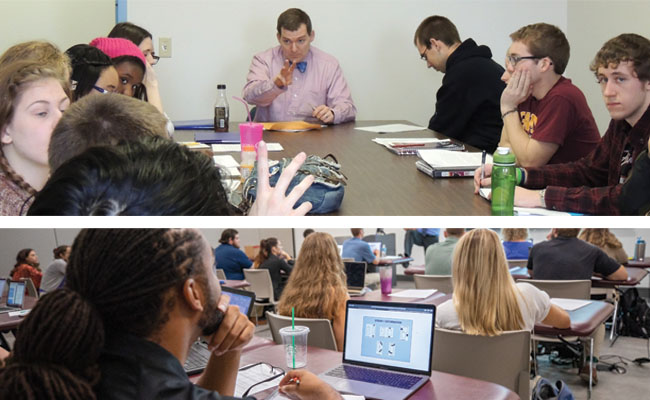
Project NePTWNE reflects Gannon University’s faith and obligation to protect the environment and Mother Earth, as Pope Francis has called on all of us to do. Gannon’s project hopes to ensure that freshwater remains an important resource in the region, and community is an essential part of this. This initiative will provide education about the relationship between water quality and public health, ensuring that everyone understands the importance of preserving freshwater.
To achieve this, the university is making plans to create a public health and policy program to bring together researchers, policymakers and community members to address water quality and other environmental issues. It will incorporate community outreach alongside academic programming to promote greater awareness and understanding of environmental issues and foster meaningful collaborations across sectors.